Interview of
Jacqueline Heijmen Bennett-Leaver
Dear aquarium enthusiasts,
We are delighted to introduce our brand new interview concept, shining a spotlight on both amateur and professional breeders who are the heartbeat of the aquarium community. To kick off this series, we aim to begin with Jacqueline Heijmen Bennett-Leaver, a seasoned expert in the breeding of Loricariidae.
First of all, hello Jacqueline! Can you introduce yourself for those who may not know you?
Hi everyone,
My name is Jacqueline Heijmen Bennett-Leaver. I like to believe that I live in the most beautiful place in the Netherlands, in the woods of the Veluwe. I love nature, and you can often find me there. With my husband and our two dogs, we enjoy being outdoors. For many years, I have worked as a coordinator at Ouwehands Zoo, a beautiful place where animals and humans come together.
Since my childhood, I grew up surrounded by pets such as birds, dogs, rabbits, fish, and horses.
During and after my studies, I worked intensively in top-level equestrian sports for about 15 years. There was no time for hobbies at that time. However, when I took a step back from this hectic life and started living on my own, an aquarium quickly appeared. It was a typical beginner’s aquarium with some discus fish, Corydoras, and some tetras. There were also some fish that didn’t fit in at all, but let’s not go into the details, hahaha!
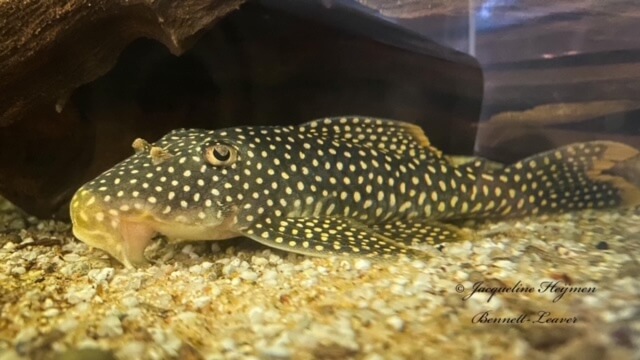
After a few years and some changes in my life, I moved and really delved into a new aquarium. This resulted in a tank measuring 1.60 meters by 50 centimeters by 60 centimeters with a biological filter or sump.
I also raised discus fish, Corydoras sterbai, and my first Loricariidae. These were Baryancistrus xantellus and Hemiancistrus subviridus. That’s when my fascination for catfish began.
Can you explain your initial steps into breeding?
In the beginning, I bred many species of Corydoras. I had set up a dedicated fish room in the shed with about 10 aquariums. I also became interested in smaller Loricariidae species such as Ancistrus, Hypancistrus, Panaqolus, and Peckoltia. The latter never really became my friends, and to this day, it is still one of the very few species that has never bred for me! However, I did well with Ancistrus and Hypancistrus species.
At that time, little information was available, and many species had not yet been bred. The internet was not as widespread, and my network was limited. After a few years, I got bored with my breeding groups and started looking for new challenges. I began searching for other fish, not just species but certainly other genera. I started keeping catfish, such as Duringlanis perugiae and Tatia species. Almost everything that came into my fish room bred successfully, and my reputation started to grow.
Can you tell us about your fishroom?
After our third move, my hobby is now primarily concentrated in my fish room. It’s quite small and compact in terms of surface area, but for me, as a small person, it is perfectly manageable. There is a 3-meter rack with 7 tanks filtered over 1 large bio filter or sump, together approximately 1500 liters of water.
Opposite this, there are 12 separate tanks, from small to large. These are all equipped with their own filter and, if necessary, a heater. The room itself is well insulated and equipped with central heating, which in turn saves costs.
Can you tell us about the species you keep?
Although I have given up the entire genus Hypancistrus (with the exception of Hypancistrus zebra), I still like to keep several species of Ancistrus. I think this is a fantastic and fascinating group! I also keep several different species of Panaqolus, Parancistrus, Scobinancistrus, Spectracanthicus, Sturisoma, Ageneiosus, Duringlanis, Corydoras, and some livebearers like Limia.
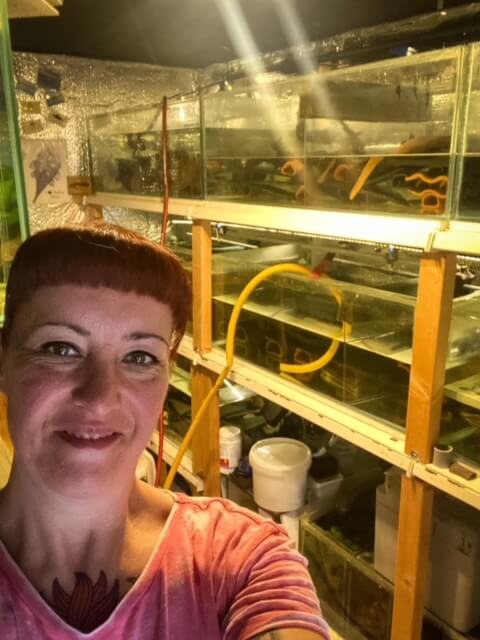
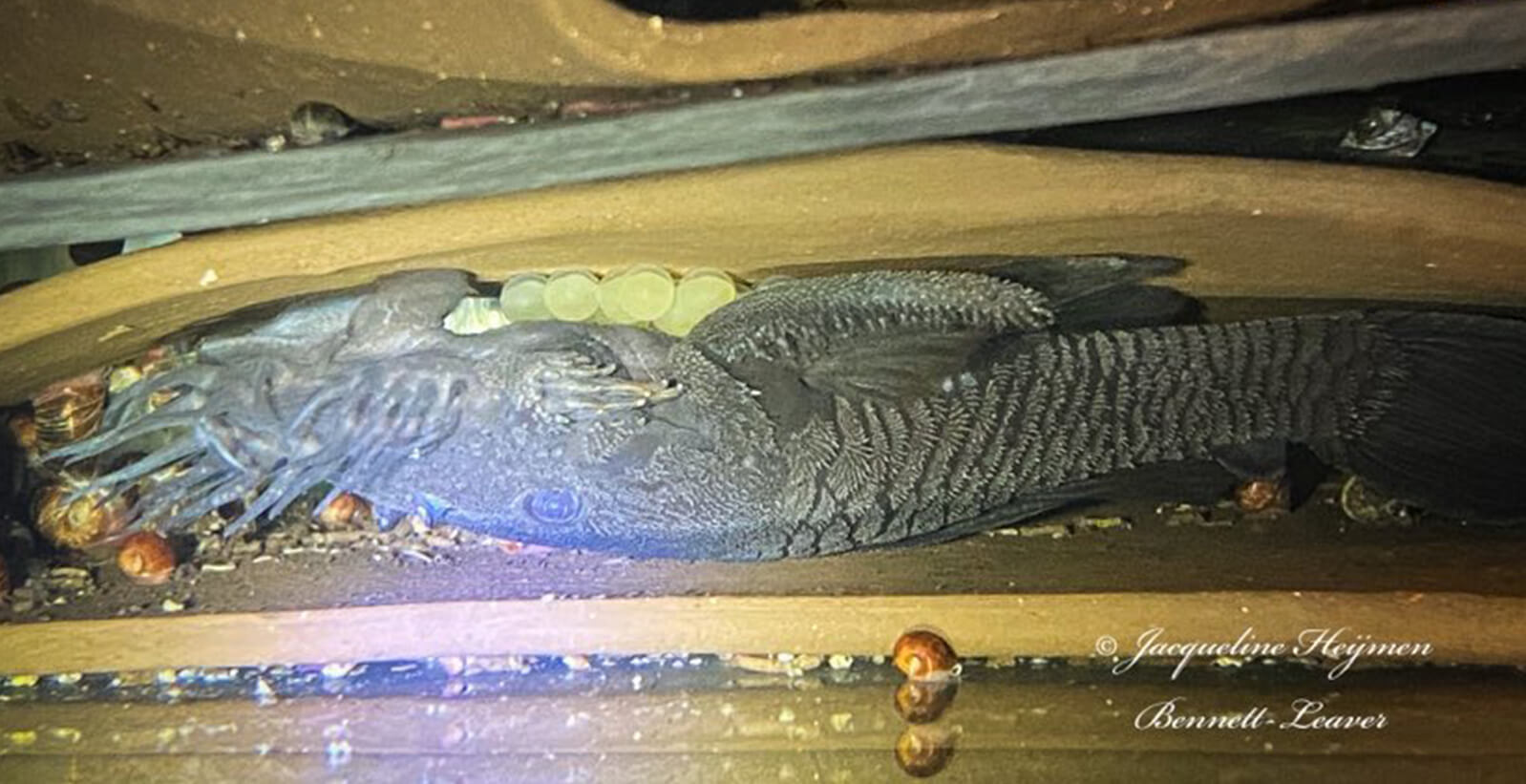
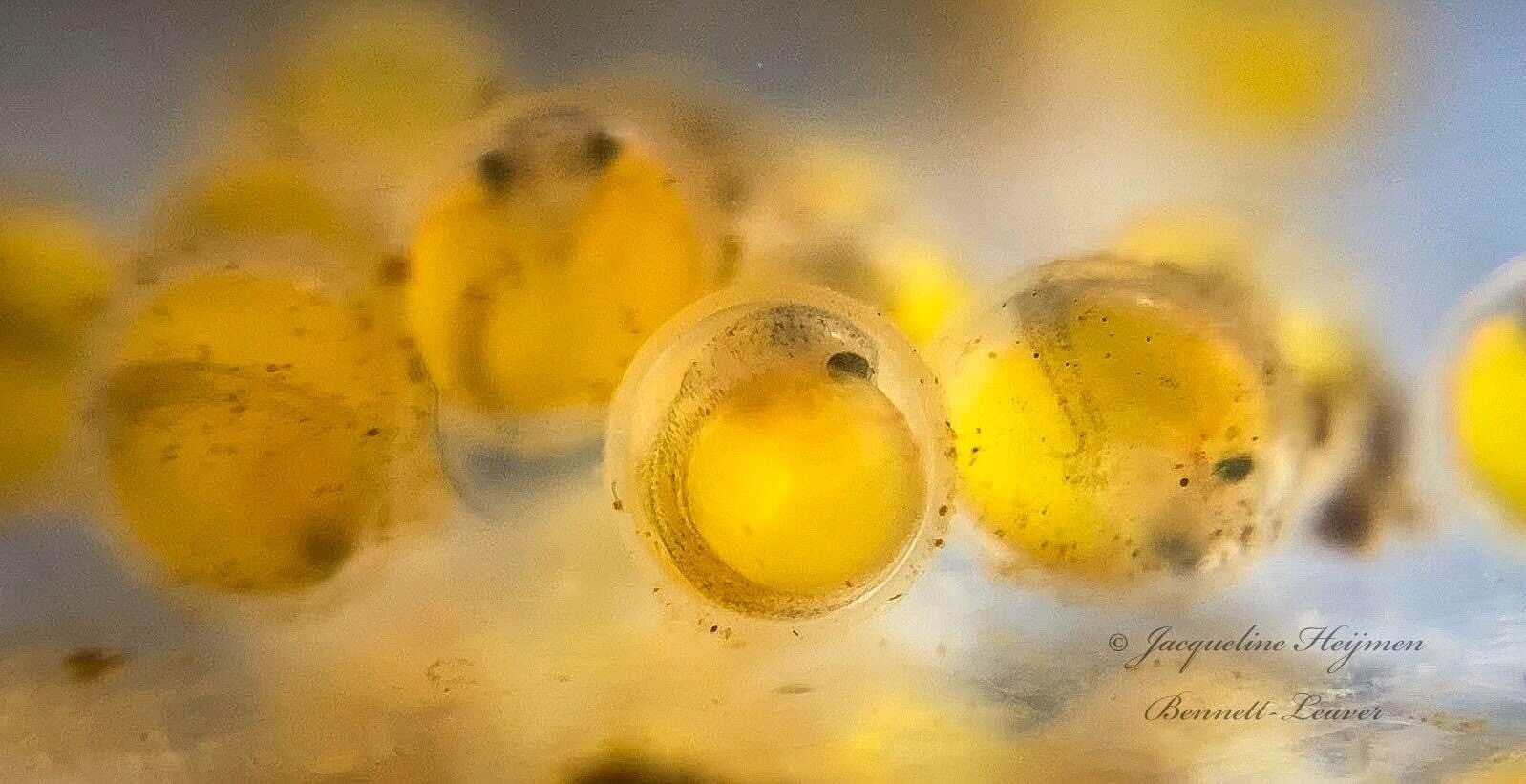
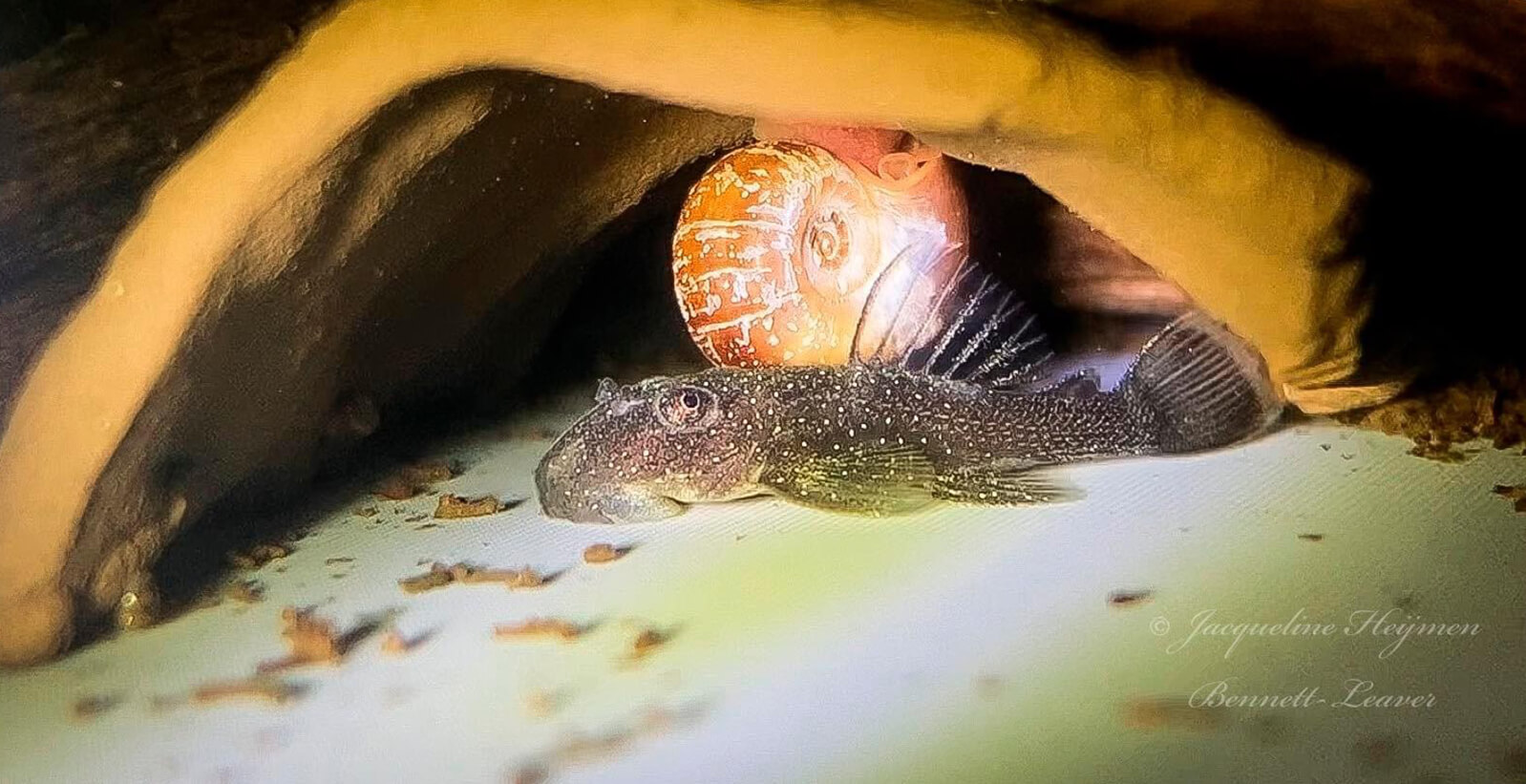
In this long list, can you give us your favorites?
One of my big favorites is the Ancistrus Medusa group. I probably own 3 variants of this Ancistrus group. The most successful is the Ancistrus ranunculus.
Can you tell us more about the breeding of this magnificent fish?
I have been raising and breeding these fish for several years without too many problems. The females approach the males. The males hide in a long flat crevice, not using the typical caves that many other Loriicaridae species use for breeding. The female sticks the eggs to the ceiling of the crevice, and the male then positions his entire body over the eggs to protect them. He then fans fresh water over the eggs with his fins. The eggs hatch after about a week.
At that moment, the young larvae are already fully prepared to survive in an open structure with currents. They have a relatively large mouth and are also pigmented black, so they don’t stand out between the cracks in the rocks.
Once the yolk sac has been digested and the young go looking for food, they still have a camouflage strategy. The young Ancistrus have small white dots for the first 2 to 3 months, allowing them to forage between the rocks almost unnoticed. After 3 months, the dots disappear and become uniformly black, just like their parents.
In addition to the Ancistrus ranunculus, I also keep the Ancistrus sp. L255, the variety with beautiful bright spots all over the body.
This species is only found in one location along the Rio Xingu, in a nature reserve supervised by the local tribe. It is prohibited to fish there without a special permit, making it challenging for hobbyists to acquire this particular species.
I have also successfully bred this Ancistrus sp. L255 several times. Finally, from this group, I keep another species about which we are not sure exactly what it is. It shares many similarities with both A. Ranunculus and Ancistrus sp. L255 but is only spotted to a limited extent. For now, I keep them separate and wait for them to mature so I can attempt to breed them.
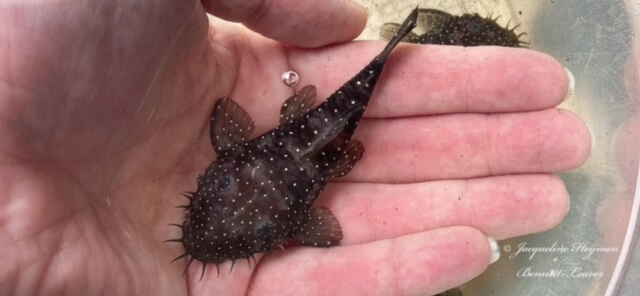
What are your future projects?
The years of the Coronavirus have had negative consequences for many hobbyists. This also applies to the high costs of energy and living expenses. I haven’t progressed in my hobby for 3 years; it simmered in the background. But since the end of 2023, I turned a corner, and things picked up again. I sold many breeding groups and took the remaining youngsters to wholesalers. This created space and new quests, new projects! What I wanted was far away but not impossible.
After a few messages, the deal was made, and the Panaqolus sp. L453 “Moa” came my way. That left me wanting more, and a few months later, the Pseudancistrus genisetiger followed.
Two exciting new projects that will keep me busy for years. Of course, there’s always something left to dream about, and that’s why I keep my ears and eyes open! For someone who prefers to stay inconspicuously in the background and just do my thing, I’ve been attracting the attention of hobbyists and professionals worldwide for years.
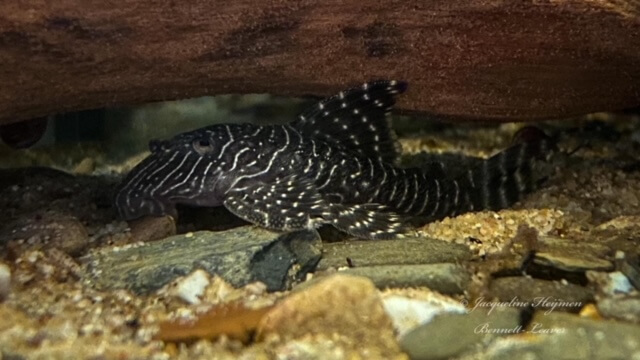
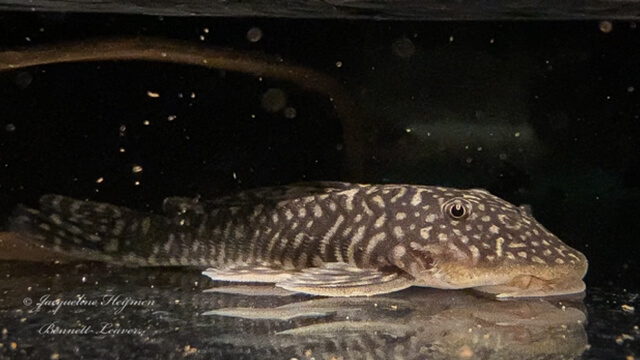
I love this hobby, and there’s nothing I enjoy more than sharing information about the species I’ve bred over the years. That’s why I’m regularly asked to give lectures around the world. As a travel enthusiast, I couldn’t dream of anything better than meeting numerous people passionate about my hobby as far as the horizon extends.

Jacqueline Heijmen Bennett-Leaver
Catfish enthousiast who likes to wander the unexplored paths